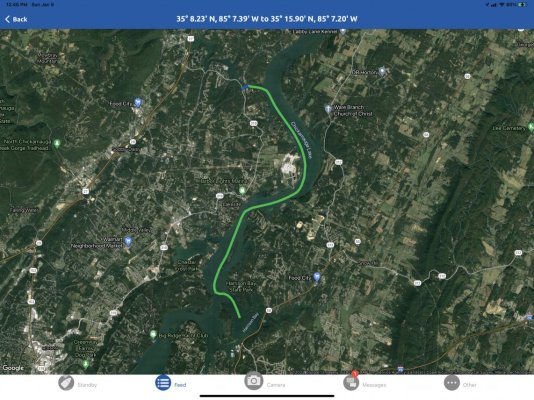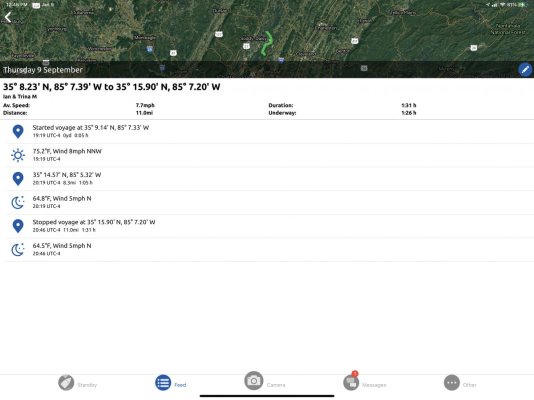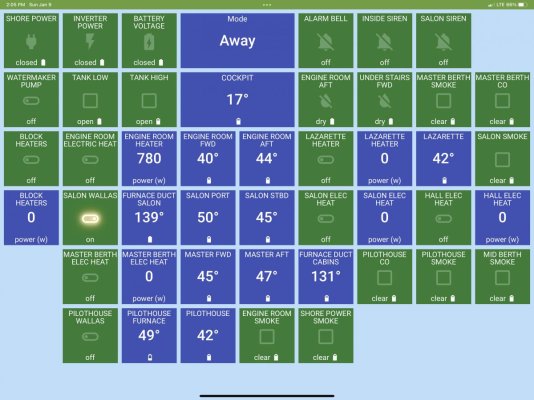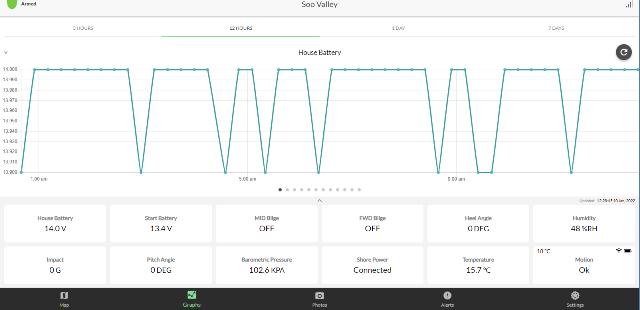Kevin, your battery setup off SOC, does it show current voltage? As I read your reply it sends an alert when they need a charge.
Here is what I get with a subscription (which I welcome a way to avoid). I get the preset alerts too, and I can look at graphs for up to 7 days.
View attachment 124736
I will experiment with smartthings at home as it has sensors of interest for home use.
If all you can get is an alert when battery needs to be charged, not enough for me. I like to see after a power outage how the inverter charger goes to work on the batteries. Shore power off/on should be easy enough.
Bilge pump activity, I get alert it ran for 15 seconds as the fuel sensing float switch set to marina mode. What I wait for is does it turn on again & again suggesting a problem. so I know when it comes on and when it shut off.




